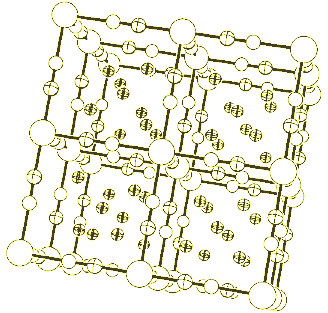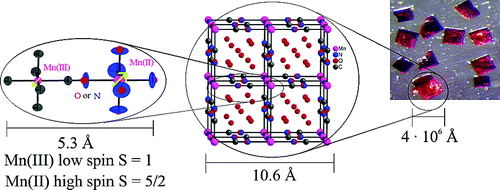-
DFT study of mixed-valent Mn(II/III) hexacyanide cluster
C. Daul, C. Rauzy, S. Decurtins, P. Franz and A. Hauser
International Journal of Quantum Chemistry, 101 (6) (2005), p753-760


DOI:10.1002/qua.20333 | unige:3620 | Abstract | Article HTML | Article PDF

The cubic Prussian blue analogue Mn3[Mn(CN)6]2 · 15 H2O, which has the advantage of being transparent and magnetic (TN = 35 K) at the same time, has been investigated by density functional theory (DFT) calculations. The three-dimensional structure is built of MnII ions linked to MnIII ions by μ-bridging cyanides, to form a crystal structure, which is related to the NaCl type. In a first step, the relative stabilities of the mononuclear complexes [Mn(CN)6]z- (z = 2 to 4) have been studied as a function of the oxidation state, spin configuration, and the linkage isomerism of the cyanide ligand. The results we have obtained by this investigation are in good agreement with our chemical expertise. In addition, the calculations have been extended to the dinuclear [Mn2(CN)11]z- (z = 5 and 6) clusters. Furthermore, we used DFT to model the magnetic properties as well as the 3T1 → 1T2 transition, which has been observed by single-crystal near-IR spectra of Mn3[Mn(CN)6]2 · 15 H2O.

